Another beauteous day began. From daybreak until sundown, Italy is gorgeous. That is why it won the nickname Bel Paese (Beautiful Country). On that topic, Lewis and I loved the soap, shampoo, and lotions that the hotel provided. Using modern technology, they were made with organic Mediterranean olive oil—which inherently contains Vitamin E and squalene (antioxidant). An enriching experience.
*For a contrast, use this link to see the harsh and toxic ingredients that America greedily and uncaringly permits in its marketplace of cosmetics and cleansers:
https://halfwindsorfullthrottle.blogspot.com/2019/02/specific-list-of-nasty-things-that.html
In the breakfast room, I surprised the server by requesting herbal tea. Unflappable and smiley, she suggested the peach flavor. It was presented in a pretty teapot with the Medici coat of arms.
I ate hardboiled eggs, which came with perfectly ochre-colored yolks! Any chef will tell you that a yolk is indicative of the chicken's diet. Healthy hens that eat natural foods (plants & bugs) produce orange-colored yolks, but the ones that are fed a diet of "processed GMO foods", hormones, antibodies (due to overcrowding), and cheaply-made "food subsidies" will produce yellow yolks. Lewis and I also munched on freshly-picked oranges, Italian smoked ham, and slices of an apricot tart. A tasty surprise was the yogurt from South Tyrol: a part of Northern Italy. The brand has an Austrian name due to its proximity to that nation.
Energized with a nutritious breakfast, we headed out to enjoy the day! We walked merrily to the train station for our day-trip to the capital of Italy.
On the way, we noticed older models of electric cars. Clearly, Italy started using "green" vehicles much earlier than we thought!
We also observed brass plaques on the front of buildings, which contained intercom buzzers and names of businesses. That reminded us of London.
So did the sight of a London Black Cab!
Mail slots in certain homes were also ingeniously designed.
We arrived at the streamlined train station and were delighted that it remained orderly during its Morning Commute time. Curious about traveling in Second Class, Lewis obtained tickets from a vending machine. In every place we went, those machines offered an option of the English language. We boarded the next train to the nation's capital: Rome. As a testament to Italy's superb railroads, the next train to anywhere departed 15 minutes after we bought the tickets. For that trip, we let the computer assign our seats, and it fatefully put us in Coach #11, which was for Second Class passengers who wanted the Quiet Car.
Like mindful riders, we waited at the designated part of the platform, and Coach #11 stopped in front of us. The automatic doors and stairs welcomed us aboard, and we sat in our chosen seats.
Remarkably, Second Class resembled First Class, except the seats were fabric instead of leather.
In the USA, levels beneath First Class are shabby. In Italy, everyone gets a nice atmosphere to travel in. However, the snacks and beverages that are complimentary in First Class are "available for purchase" in Second Class.
Without shudders or noise, our high-speed train glided out of the station on-time. Traveling across 280 kilometers, we passed other high-speed trains operated by Italo.
Along the way, we tracked our progress on ceiling-mounted screens that showed our train on a map (and images of upcoming stations).
(That simple convenience doesn't exist on America's Amtrak and MetroNorth trains, despite their busy ridership).
As the train skimmed beyond the outskirts of the city and entered some suburbs, we saw noise-cancellation walls along the tracks. Lacking in the USA but prevalent in Asia and Europe, such thoughtful infrastructure protects home-owners from railway noise (even though the speed trains are hushed).
From the window, we admired the contours of the fertile Tuscan landscape: hillsides farms, hilltop villages, vineyards, and fields of greenery.
The pastoral scenery morphed from Tuscany into the Lazio Region. Its capital is Rome, which is also the capital of Italy.
The train delivered us to Rome on-time.
Humans settled in that area throughout the last 14,000 years! Whoever resided in Rome influenced the realm. From tribal territories, its society metamorphosed into a kingdom, republic, empire, Papal State, part of the French Empire, another republic, another kingdom, and into the current Republic of Italy.
Crossing the Tiber River, we travelled along the Diramazione Roma Nord. Our ride ended at Roma Termini: 33 platforms that handle 180 million passengers every year. After Paris' Gare due Nord—which Lewis and I used previously and admired—it is the largest train station in Europe. It maintains its 1947 streamlined appearance that blends an exterior facade (reminiscent of ancient Roman aqueducts) with a comfy state-of-the-art interior.
Seen below, Lewis and I exited by that sleek cafe that overlooks an ancient Roman ruin! An impressive view for a dazzling station.
Inside the subterranean Metro station (which adjoins the terminal), we hopped aboard the next train.
Once again, that station offered large-screen and ceiling-mounted televisions for waiting passengers... something that is unseen in the decrepit subways of America's wealthiest city.
The train itself was clean and new, allowing people to walk through its entire length to avoid congestion in one area. There were no homeless people, graffiti, vandalism, panhandlers, or broken parts.
11 minutes later, we got off at Ottaviano Station.
Lewis and I liked the pastel colors of the buildings in that area. We don't have those things at home.
Our destination was not the capital of Italy: it was a separate nation. We headed to the micro-nation of Vatican City within the city of Rome. The experience was reminiscent of our visit to the City of London within the city named London. Perhaps the notion of a "sovereign city within a city" was copied from the City of London?
To read about our trip to London, please use this link:
https://halfwindsorfullthrottle.blogspot.com/2021/10/our-trip-to-london-uk-part-1-which.html
*In truth, Italy contains another micro-nation: the Most Serene Republic of San Marino. Unlike Florence, that city remained an independent republic and has the world's oldest governing documents in use (circa 1600).
Vatican City was created in 1929, as the world plummeted into the Great Depression (which was caused by NYC's Wall Street financiers). It is ruled by the Pope as the only absolute monarchy in Europe. It has its own flag that features its historic claim to own the "keys to heaven"—supposedly granted by God with a wish that each pope be God's "representative on earth". That's convenient.
Unique in the world, the global headquarters of a religion has its own country. Its sovereignty is ruled solely by the pope, who is an elected monarch. As an absolute monarch, each pope has supreme legislative, judicial, and executive powers. Vatican City has a legal system that is distinct from Italy, and the pope rules its court and court of appeal. Popes (Pontiffs) have their own Pontifical Anthem, which is performed when they arrive at an event and when the Vatican flag is raised. The pope's anthem is the national anthem of the Holy See and Vatican City. As with any king, the papal coat of arms is brandished on whichever jet, helicopter, limousine, Popemobile, or vehicle that he uses.
Buddhists, Muslims, Lutherans, Anglicans, Hindus, Methodists, members of South American Spiritism, Greek Orthodox, Russian Orthodox, Jews, believers of Islam, celebrants of Japanese Shintoism, Baptists, Mormons, Presbyterians, Sikh followers, Jehovah's Witnesses, and pagans do not have that type of arrangement. None of them employ their own security forces, as the Vatican does (paid for by donations from believers, despite the Vatican being tax-exempt because it's a religion).
Obviously, those faiths were not as dastardly as the Roman Catholic Church throughout history, so they have fewer enemies.
The Catholic Church occupies its own country, yet it has no taxes, customs fees, or import/export restrictions. As its own nation, it has a global political advantage over other religions because it gets a seat at the United Nations.
It also employs Permanent Observers at the Council of Europe and the international Organization of American States.
Having its own sovereignty, the Vatican dispatches its ambassadors (titled as Papal Nuncios) to every nation. Just like the pope, they are acknowledged by presidents and royalty.
They enjoy the benefits of diplomatic immunity and being able to transport anything they desire across international boundaries via Diplomatic Pouches. Therefore, taxpayers in every nation pay for their police escorts and entertainments. Simultaneously, never-ending donations from Catholics—mixed with Vatican wealth/investments—pays for their 107 embassies (in expensive neighborhoods), expense accounts, staff, travel, governmental "gifts", and retirement.
Within Vatican City, the Pontifical Governorate (Roman Catholic legislature) works in a splendid palace, seen below.
The global jurisdiction of the pope is called the Holy See. As the Sovereign of the Vatican City State, the Pope can initiate people into chivalric orders of knighthood, such as the Equestrian Order of the Holy Sepulcher of Jerusalem, the Supreme Order of the Golden Spur, and the world-famous Knights of Malta, which has its own sovereignty headed by a Prince & Grand Master.
If they assist His Holiness, they are part of the Papal Court, and they report to the Prefect of the Papal Household. Since 2012, that man has been His Excellency, the Most Reverend Georg Ganswein.
As we neared the city walls, they reminded us the ones we saw at the Forbidden City in Beijing.
*To see that palatial property in China, please use this link:
https://halfwindsorfullthrottle.blogspot.com/2014/11/our-trip-to-china-part-i.html
During our stroll, the other side of those walls contained the Vatican's pharmacy, thermoelectric power station, tennis courts, and barracks for the Swiss Guards. The mammoth walls were erected in 847 and expanded during the centuries.
We followed roundabout signage to the Vatican Museum. Before our trip, we purchased online tickets: €17 each. The museum makes visitors buy tickets online but charges a €4 "convenience fee" to buy each ticket online!!!
Signs directed us vaguely towards the entrance. However, our entrance was thwarted because we weren't wearing the specific type of face mask that the Vatican demands. Despite all of the regulations posted on its website, that detail was not mentioned!
Lewis and I—and many others—were ordered to get off the line and buy a mask and come back. Seemingly aware of the pratfall that hundreds of tourists encountered, there were several vendors who sold those masks... near the entrance. Lewis hypothesized that they shared their profits with the museum to keep their positions near the entrance. We overpaid for the mandated masks and then were permitted to enter.
Outside of the walls, the Capital Police of Rome patrolled the vicinity (and they include women).
Within the walls, it is different. Going through the wall constituted a border-crossing. We underwent a security screening conducted by the Vatican Gendarmerie. The all-male group was formed in 1816, and this is its logo.
The process was prompt. Expecting rain, we brought complimentary umbrellas from our hotel. (Thankfully, we experienced dry weather!) Yet, the guards insisted that our umbrellas were stored in the museum's Coat Check. At least the Coat Check was free (unlike our experience in Helsinki)... and our relief made the attendant chuckle.
By entering the walls, we crossed an international border.
Vatican City has its own post office, heliport, governing council (Roman Curia)...
... executive-branch of government (Pontifical Commission of Vatican City-State)...
...ecclesiastical courts (that overrule each nation's legal system)...
...fire brigade, papal (royal) guards [the Swiss Guard], and a police gendarmerie. They all work for the pope.
Vatican City is a UNESCO World Heritage Site and the "most sacred place in Christendom". It has a lot of buildings and many gardens, but most are off-limits to tourists.
The scope of the property is more astounding when you know that the papacy also owned a humungous palace in Avignon, France, from the 1300s until 1805!
That is a lot of property for one pope.
We followed our map upstairs but couldn't find our way to the Sistine Chapel. We wanted to start there because the last time that Lewis visited the Vatican, the chapel was closed for renovation. So, he was eager to see it. We questioned a guard who was appalled that we wanted to go there straightaway. He referred us to the labyrinthine route that circuitously took people through all of the other exhibits. It's like being compelled to pass through the casino of a Las Vegas Hotel before you can actually enter the hotel. Respectfully, we agreed.
Here is Lewis' video of one of the museum's halls.
It is full of Grecian statuettes, Egyptian sarcophagi, ancient urns, outdated maps, tapestries, and kilometers of vaulted ceilings that are frescoed and gilded in every centimeter.
Smartly, we spent less time in those exhibits, which was where the tour groups got "bogged down".
Bypassing the hordes, we reached less-crowded exhibits that were further ahead. That was an advantage of timed entries for museum-goers. At that point, we paused to admire the history. Here is Lewis' short video of it...
As the world's smallest kingdom, Vatican City has a tiny population of 825, but many dwellers commute from Rome and work there. We saw their parking lot, which also contains vehicles for the fire brigade (since space is tight in the 0.17-square-mile nation). It is the Belvedere Courtyard, where the Renaissance artists toiled to create their masterpieces.
Then, we entered an older part of the papal palace. It was where the notorious Borgia family resided, when members of their clan were popes. Before our trip, Lewis and I watched the 2011 BBC series, The Borgias (starring Jeremy Irons).
As popes and cardinals, they were débauché, deprived, vile, murderous, corrupt, incestuous, back-stabbing, treasonous, and they were full of nepotism.
*The origin of the word "nepotism" (nepotismo) is from popes who gave favoritism and preferential jobs—such as authoritative cardinals—to their nephews (nepos). Despite enforcing "vows of celibacy" for Catholic clergy, they broke the rules and had mistresses... and illegitimate children. Then, those popes made those children—or their mistresses' brothers—into high-ranking clerics.
As embezzlers and money-launderers, the Borgia dynasty enriched itself—and the Church forevermore—by telling faithful believers that they must pay the Catholic Church to have their sins forgiven. Then, they invented the imaginary notion of purgatory (before hell) and further instituted fees to fictitiously "save souls" from it.
Seen below, the metalwork dates from 1529.
When we saw an antique globe, it reminded me of how the Roman Catholic Curia persecuted scientists in the 1410's (until the 1720's) who tried to prove that the world was round and that the earth revolved around the sun.
The papacy insisted on the opposite viewpoints, and they asserted that they could not be wrong because God authorized everything that they said/did (and people believed that). Instead of learning from researchers and astronomers, they silenced them. Papal bulls (royal decrees) banned books by Nicolaus Copernicus for 200 years. In 1614, Galileo Galilei was outspoken and suffered a trial—conducted by the Catholic Church (not a legal court)—and was deemed to be a heretic! The usual punishment for being a heretic (a vague term applied to anyone who disagreed with the Church) was being burned at the stake. Criticizing the Church was considered blasphemy, and it could also be punished with death. (Jesus taught Forgiveness, but the Church ignored that, as it ignored Jesus' desire that churches/temples NOT be places of commerce/profit). Galileo was imprisoned by the papacy until he died. He was buried in the Grand Duchy of Tuscany, alongside other grand dukes in a tomb in Florence's Santa Croce Church (which we saw). In 1992, the Roman Catholic Church finally apologized for condemning him.
Roman Catholics executed scholars who were smarter than them... acting as if God intended mankind to remain uneducated. Before Christianity, many ancient cultures were amazingly advanced, but Catholicism absorbed or eliminated them. Catholic authorities decreed death for "medicine women" throughout Europe and the "New World". The Church began Witch Hunts to murder women because it believed that women were an inferior gender. (Historically full of misogyny, the Church still refuses women to have equality in its ranks). In 1440, Johannes Gutenberg invented the printing press, to spread education. In 1478, the Spanish Inquisition persecuted educators who challenged the Catholic Church. Across continents, the Church initiated Holy Inquisitions to massacre organizations that opposed them.
In addition, homosexuals were routinely executed, even though hypocritical high-level clergy enjoyed homosexual frolics. [Recently, Vatican police stopped a gay orgy in a cardinal's apartment (owned by the Church) and incarcerated the participants for "Sexual Abuse"].
Of course, the world was proven to be round, and as soon as new continents were discovered, the papacy was zealously quick to pilfer them. To gain money, popes told nations that God permitted them to pillage other continents (like South America). Under the guise of "religious education", the Church dispatched monks and priests as emissaries to foreign lands, but they massacred natives who did not covert to Christianity... and nations lent their armies to assist, in exchange for plunder. From those tactics, the Vatican won never-ending streams of tithes and donations from new generations of Catholics around the globe. In the last 40 years, a couple of popes made some changes to the murky corruption of the Church.
To learn more, please use this link:
https://halfwindsorfullthrottle.blogspot.com/2015/10/popes-papal-history.html
Progressing to the next wing of the palace, Lewis and I stopped to admire small details in a vestibule. Most tourists only gawk at the artwork or ceilings, but we take the time to appreciate the craftsmanship in other details. In the image below, notice the metal swirls that are carved from brass; the swirls are not identical because they are not mass-produced or made from a mold. Each one was crafted by hand. We also inspected the gold-painted wall, which had a graph-like pattern stenciled on it, with leaves painted over it.
Being a graduate of the Fashion Institute of Technology, Lewis enjoys cultural clothes. He assessed the centuries-old cardinal's hat; its age made the edges curl... like an Aussie outback hat!
Finally, we reached the Sistine Chapel, which adjoins the Apostolic Palace.
It is where papal conclaves occur to vote on each pope. Originally built in 1473, the chamber was too plain for Pope Julius II. So, in 1508, he hired Michelangelo from Florence. Uneducated skeptics in the Vatican doubted his abilities, but the pope had faith in him. Underpaid—when paid at all—he was requested to paint the chapel's 68-foot-high ceiling. In 1515, Raphael famously created the tapestries that hung on the lower halves of the walls. Part of the "third generation of Florentine artists", Domenico Ghirlandaio painted frescos on the side walls above the tapestries. (Alas, during the 1527 Sacking of Rome, the tapestries were looted/destroyed). Being a genius, Michelangelo devised plans, stencils, models, scaffolding, and a team of apprentices to complete the work in four years. The result is an epic masterpiece!
Gendarmes reminded visitors to remove their hats (since the room is a sanctified chapel) and notified everyone that photography was not tolerated. They also decreed that silence was mandatory. The rules are also posted on the website.
*To see when we encountered a gendarmerie in Amsterdam, please use this link:
We saw foreign clergy, monks, and nuns visiting the chapel, and they were all mesmerized by its grandeur. Perceptively, Lewis found a bench at the edge of the wall for us to sit and admire the artwork. Most people didn't notice them and craned their necks to stare upward. I recommend sitting.
We recognized many of the images. Months earlier, an exhibit about the Sistine Chapel came to Manhattan, during its nationwide tour. Lewis got us tickets to see it. Each ticket cost $19.20: a typical NYC ripoff, considering that the entire Vatican Museum and authentic Sistine Chapel only cost €17 = $18.50! The exhibit was assembled in a vacant high-rise building in the West Village. (The landlord was probably happy for some income, while NYC's real estate market stagnates due to COVID... and NYC's failing/neglected infrastructure). The exhibit consisted of enlarged images of the each part of the Sistine Chapel's ceiling, positioned so we could stand in front of them and admire the details.
That helped us appreciate seeing the originals, which depict scenes from the Old and New Testaments. Other biblical scenes involve pagan worshippers being slaughtered, a Hebrew hero being beaten to death, a human sacrifice, a tossed charioteer, and King David's son—the handsomest man in the kingdom who slept with David's concubines—fleeing David but getting his hair caught in a tree until he was murdered.
Michelangelo also painted twelve prophets—purposefully making five of them women. Collectively, ancient Greek, Persian, Egyptian, and Hebrew mythologies called them Sibyls (Latin for priestess).
To provide perspective, Michelangelo painted the characters at a slight slant, so they appeared normal when viewed from the floor. That's ingenious.
Defying the papal gendarmerie, Lewis covertly photographed the Sistine Chapel.
Nearly everyone was momentarily distracted by a prayer/blessing given at that moment. Feeling blessed to snap that picture, we scampered out. After a long corridor of armoires and "closets", we passed through the underwhelming Gift Shop. That was a disappointment.
Maybe the Vatican has so much wealth in its treasury that it doesn't think that attractive souvenirs are necessary. Despite owning a treasure-trove of artifacts and artwork, its souvenirs are nondescript. Look at these Christmas ornaments with unremarkable patterns.
Who would want to buy them? Not us. Instead of selling Christmas balls covered with copies of artwork, they only sold balls with "boring" images... or so many that the images became tiny. Pillows, bookmarks, mugs, and jewelry were similar in their lack of creativity. Nondescript angels were on many souvenirs... even though angels never had wings. (They were merely depicted with them to indicate their roles at "heavenly messengers"... copied from the pagan Roman "Mercury" and polytheistic Greek "Hermes". We decided that our photographs were the best mementos.
Passing the city-nation's post office, we saw another "missed opportunity". Only a few people paused to write postcards.
They should encourage visitors to pause and buy postage-paid postcards to send "internationally" to their friends and loved ones. Many people would appreciate the novelty of receiving mail from within Vatican City. Yet, there were no advertisements to suggest the idea, nor were there many surfaces to write on.
An ornate spiral staircase "drains" the visitors out of the building and towards the exits.
From there, we proceeded to the gardens.
There is no connection from the museum or gardens to the forecourt of St. Peter's Basilica: the main attraction of Vatican City. Visitors must exit the museum, exit the walls, and re-enter elsewhere. At least the papal security ensured that our umbrellas were not stolen from the Coat Check. (In NYC, many places absolve themselves of their responsibility to safeguard your possessions—which they request you to leave with them).
We exited the museum, exited the city walls, walked in the street (the sidewalks aren't broad enough for the volume of pedestrians)...
We re-entered the micro-state's international border, and therefore went through another Security Screening. The lines were long. Mercifully, the queue moved steadily, and the gendarmes maintained civility.
We noticed the Swiss Guards wearing their winter cloaks. It was 61-degrees (only 36 in NYC)...
...but that was chilly for them.
The corps of guards was formed in 1506. As a graduate of America's prestigious Fashion Institute of Technology, Lewis was fascinated by their historic uniforms. Dating from 1506, their colorful uniforms remain unchanged and supposedly lack a blueprint for making them.
Traditionally, one is disassembled (154 pieces) to decipher how to make a new one. Each one weighs a whopping 8-pounds! Raphael influenced their design, using the colors of the Medici family. Originating in Switzerland, the troops were hired by other nations as excellent bodyguards. (Similarly, elite Hessian troops from the German Principality of Hesse were hired by monarchs to fight wars for them). Switzerland has the world's oldest military neutrality, yet deploying Swiss Guards is their exception. To be a Swiss Guard, a candidate must be an unmarried young man who completed time with Switzerland's Armed Forces. Of course, he must be Catholic.
Guardsmen who are training must wear blue tunics and leggings with white collars (which resemble old uniforms at Eton College).
...but full-fledged soldiers wear the iconic yell0w/blue/red color-scheme. For gala occasions, they add armor and helmets.
There are 135 guards, and they are armed with, swords, classic rapiers, and modern weaponry. Similar to the Queen's Guard in the United Kingdom, they remain silent when on duty. If a guard has his hands crossed ("at ease"), that indicates that he will speak when spoken to.
Soon, we progressed up a ramp to the majestic cathedral: the largest church-building in the world.
Once inside, Lewis and I were reminded of its hallowed grandeur that we witnessed during our previous (separate) visits. It is breathtaking.
Even thought it was the "slow season" for tourism (and a quiet time in the liturgical calendar), crowds still swarmed the basilica. But, with so much vastness, it was easy to sidestep them. I watched a priestly procession, while Lewis was awestruck by the dimensions of the space.
Named Saint Peter's Square, the huge forecourt is sometimes so animated with people that it looks like a circus. It was designed by a mastermind named Gian Bernini in 1686. We admired the sprawling colonnades (which make the space have a shape like a "key"—befitting an organization that claims to possess the Keys to Heaven).
We posed for photos by the ancient Egyptian obelisk. We visited its two "sisters" in London and New York. Those were inscribed with hieroglyphics, but the Vatican's was unfinished... yet they took it anyway. Actually, Emperor Augustus (born 27 BC) excavated it and put it in his imperial city of Alexandria, in Egypt. In 37 AD, the depraved Emperor Caligula moved it to Rome. Pope Sixtus V took it to the Vatican in 1586.
Ambling down Via della Conciliazione (a thoroughfare paved in 1936), we noticed clusters of embassies crammed into buildings. Due to its international status, Vatican City necessitates foreign consulates to be nearby. It's probably the only place in the world where consuls share spaces. Since the pope's monarchial power is titled as the Holy See, the embassies are named "Embassy of (Nation's Name) to the Holy See". We recognized the flags for Croatia, Argentina, Brazil, Russia, Armenia, China, Canada, and Malaysia.
Lewis wanted to buy a pair of Italian-made shoes whilst he was in Italy, so we headed to the Metro. After that, we were due to meet his friend who lived in Rome.
Join us in the next part! Andiamo!













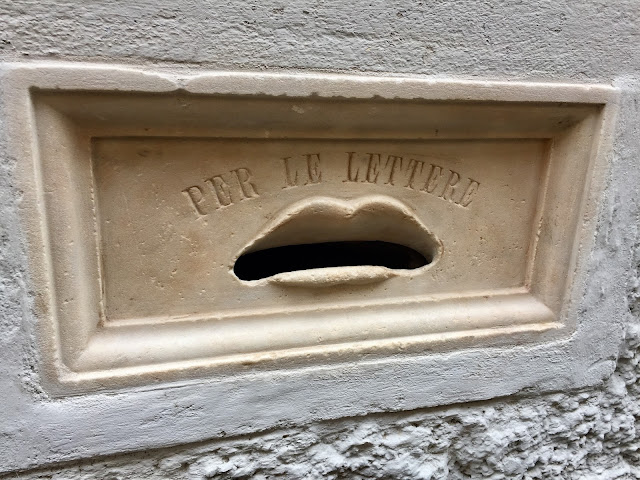




































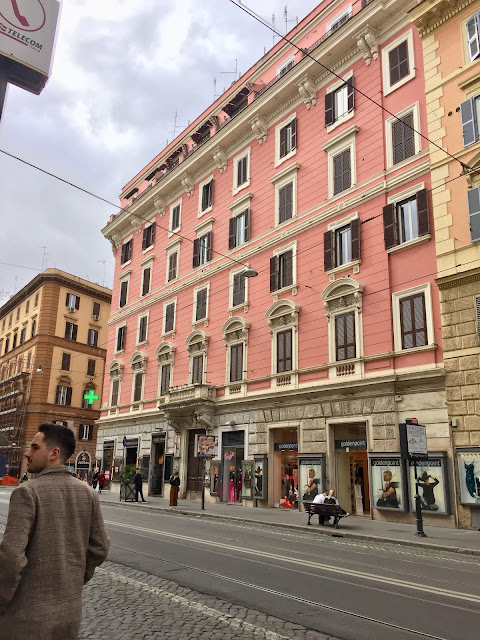




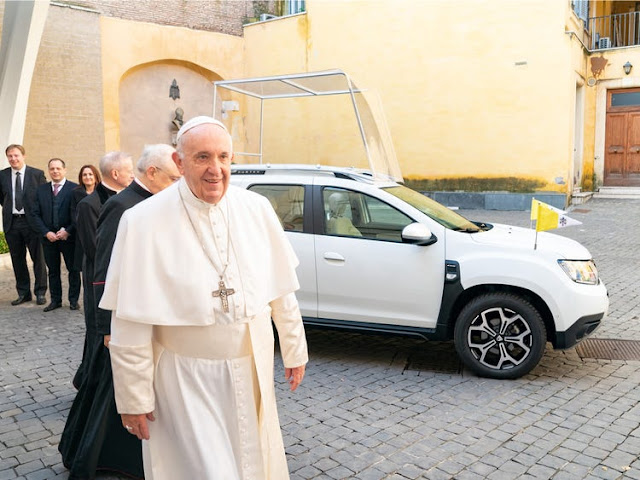






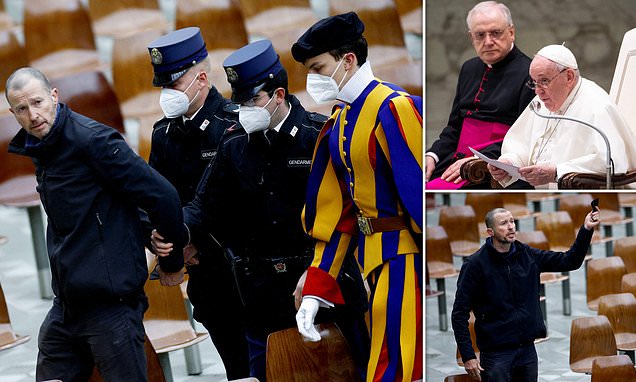








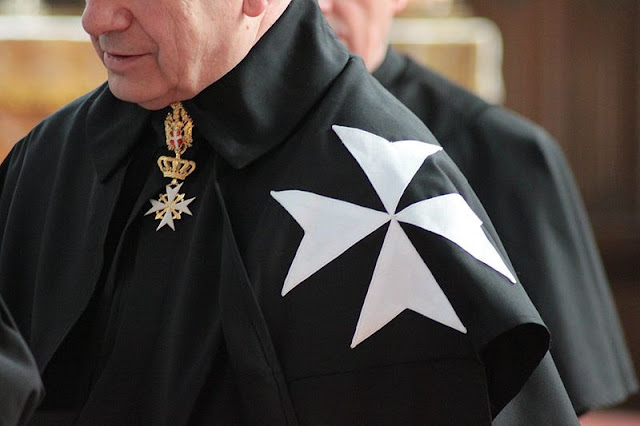

.svg.png)


















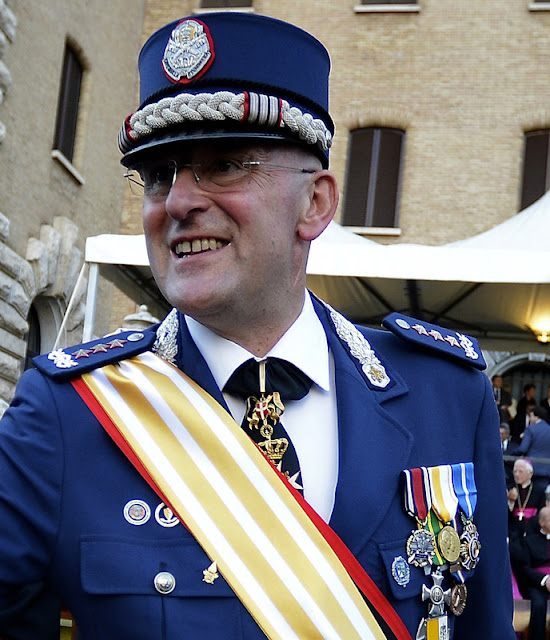

















_section_of_the_Vatican_Gardens_-_panoramio.jpg)

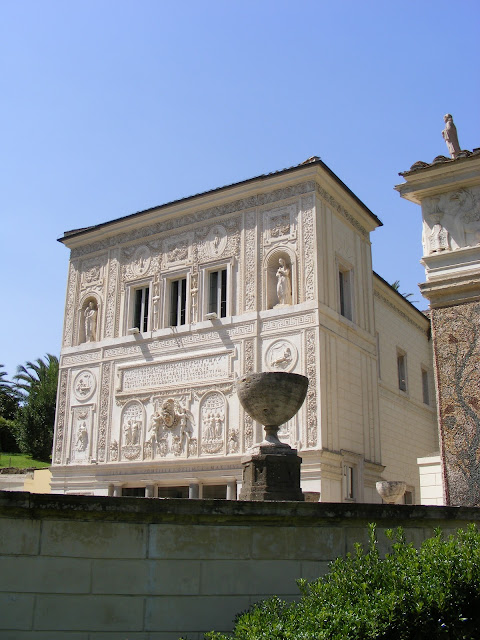










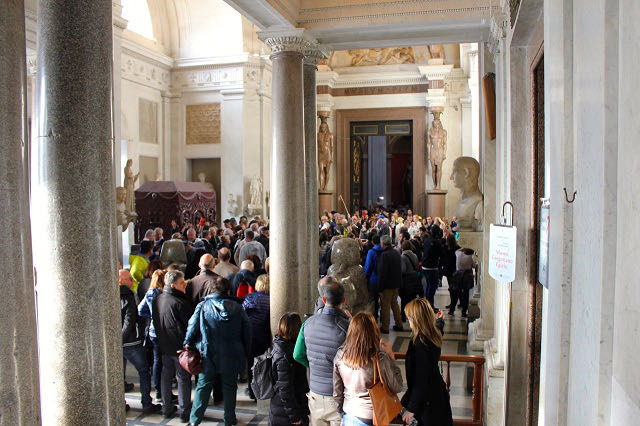

















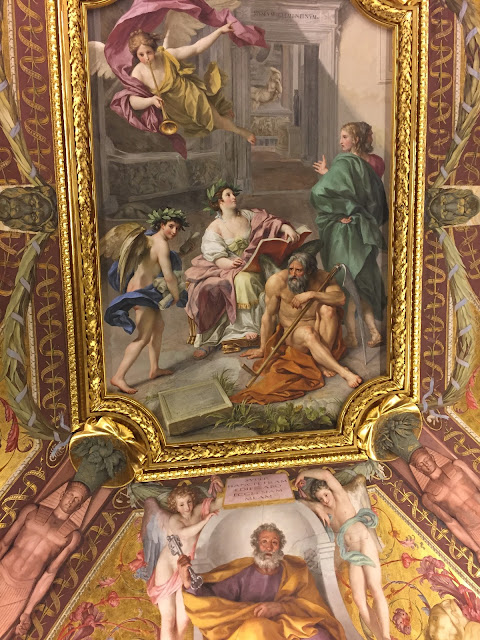

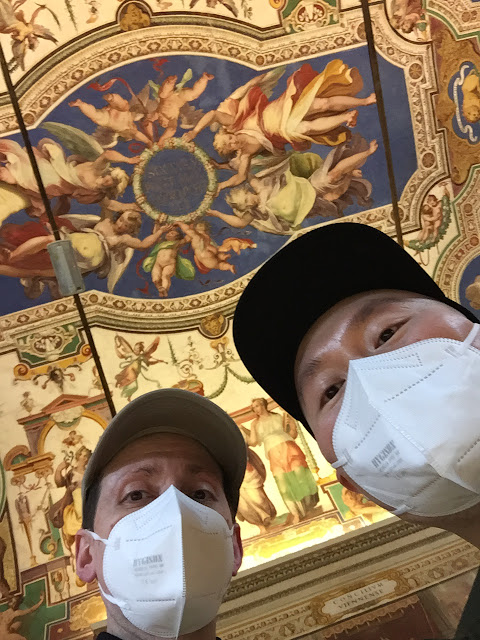


.jpg)






















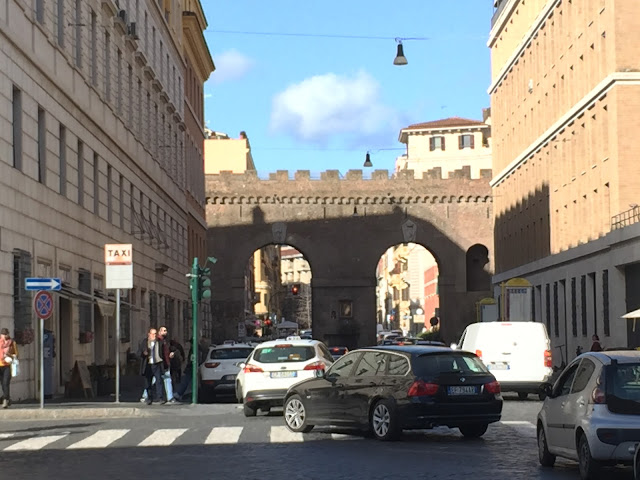

















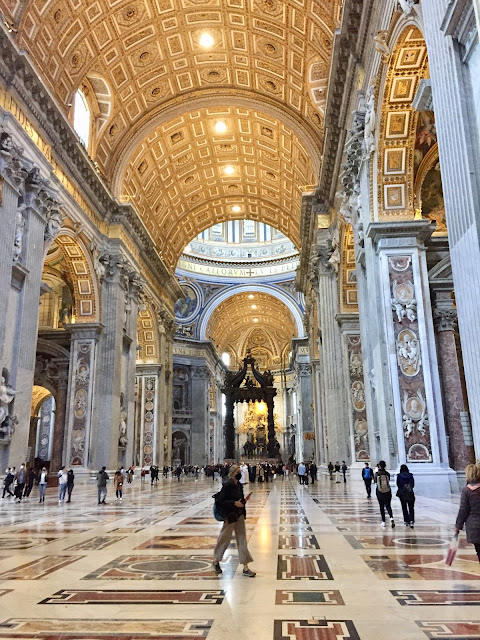



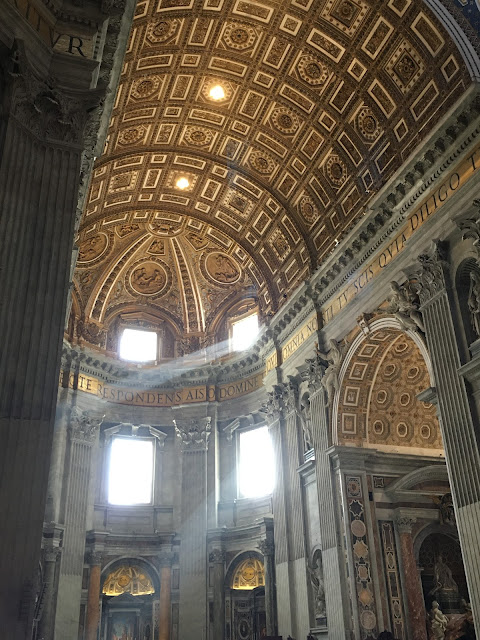























No comments:
Post a Comment
Don't be shy: leave your comments :)